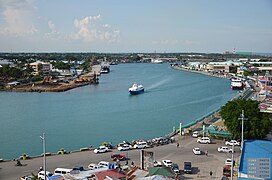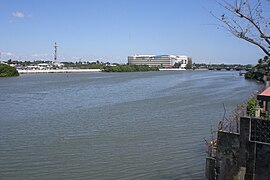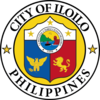| Iloilo River | |
|---|---|
 Iloilo River in Iloilo City Proper | |
Iloilo River mouth | |
| Native name | Subâ sang Iloilo (Hiligaynon) |
| Location | |
| Country | Philippines |
| Region | Western Visayas |
| Province | Iloilo |
| City/municipality | |
| Physical characteristics | |
| Source | Iloilo-Batiano River Basin |
| • location | Oton |
| Mouth | Iloilo Strait |
• location | Iloilo City |
• coordinates | 10°41′34″N122°35′05″E / 10.69278°N 122.58472°E |
| Length | 26.4 km (16.4 mi) [1] |
| Basin size | 82.5 sq.kilometres (31.8 sq. miles) |
| Basin features | |
| Progression | Iloilo River – Iloilo Strait |
| Bridges | 11 |
 | |
The Iloilo River is an estuarine river located in the southeastern part of the province of Iloilo, in Western Visayas, Philippines. The river starts in Oton at the Batiano estuary, then traverses through the Iloilo City districts of Arevalo, Molo, Mandurriao, La Paz, Lapuz, and the City Proper, before emptying into the Iloilo Strait.
Contents
As an estuary, the river level fluctuates with the tides. This flow brings in nutrients from the sea, which makes the Iloilo River a nursery for fish species such as bangus and tilapia. The banks of the river are home to 22 of the country's 35 mangrove species, as well as the rare metapenaeus insolitus. [1]









